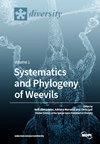Discovery of Cyanobacteria Associated with Cycads and Description of Three Novel Species in Desmonostoc (Nostocaceae)
IF 2.1
3区 生物学
Q2 BIODIVERSITY CONSERVATION
引用次数: 0
Abstract
Heterocyte-forming cyanobacteria form symbiotic relationships with several lineages of plants. Here, twenty (20) strains of endosymbiotic cyanobacteria (cyanobionts) with Nostoc-like morphologies were isolated from the highly specialized coralloid roots of five host species in Cycadales—Cycas debaoensis, C. fairylakea, C. elongata, Ceratozamia robusta, and Macrozamia moorei. Molecular phylogeny based on the 16S rRNA gene placed these strains into seven different taxa within the Nostocaceae, specifically under the genera Desmonostoc and Dendronalium. The percent dissimilarity and unique patterns in the secondary structures of the D1-D1′, Box-B, V2, and V3 helices, which were based on the 16S–23S rRNA internal transcribed spacer (ITS) regions, supported three distinct species in Desmonostoc. These three morphologically distinct novel species are described in this report: Desmonostoc debaoense sp. nov., Desmonostoc meilinense sp. nov., and Desmonostoc xianhuense sp. nov. Other investigated strains were phylogenetically identified as members of the recently discovered genus Dendronalium and represent the first report of association of that genus with cycads. Our findings suggest that the order Cycadales hosts diverse species of cyanobionts in their coralloid roots and that many potential unreported or novel taxa are present in cycads occurring in their natural habitat and await discovery.苏铁蓝藻的发现及三种新种的描述
形成异细胞的蓝藻与植物的几个谱系形成共生关系。本研究从苏铁科5种宿主——德保苏铁(cycas debaoensis)、fairylakea苏铁(C. elongata)、Ceratozamia robusta和Macrozamia moorei的高度特化的珊瑚根中分离出20株形态类似nostoc的内共生蓝藻(cyanobionts)。基于16S rRNA基因的分子系统发育将这些菌株划分为Nostocaceae中七个不同的分类群,特别是在Desmonostoc和Dendronalium属下。基于16S-23S rRNA内部转录间隔区(ITS)的D1-D1′、Box-B、V2和V3螺旋二级结构的百分比差异和独特模式支持Desmonostoc中三个不同的物种。本文描述了三个形态上不同的新种:Desmonostoc debaoense sp. nov., Desmonostoc meilinense sp. nov.和Desmonostoc xianhuense sp. nov.。其他被研究的菌株在系统发育上被鉴定为最近发现的Dendronalium属的成员,并首次报道了该属与苏铁的联系。我们的研究结果表明,苏铁目的珊瑚根中有多种蓝藻生物,并且在苏铁的自然栖息地中存在许多潜在的未报道或新的分类群,等待发现。
本文章由计算机程序翻译,如有差异,请以英文原文为准。
求助全文
约1分钟内获得全文
求助全文
来源期刊

Diversity-Basel
Environmental Science-Ecological Modeling
CiteScore
3.40
自引率
12.50%
发文量
925
审稿时长
11 weeks
期刊介绍:
Diversity (ISSN 1424-2818) is an international and interdisciplinary journal of science concerning diversity concept and application, diversity assessment and diversity preservation. It is focused on organismic and molecular diversity. It publishes reviews, regular research papers and short notes in the regular issues. Related news and announcements are also published. Our aim is to encourage scientists to publish their experimental and theoretical results in as much detail as possible. Therefore, there is no restriction on the length of the papers. Full experimental details must be provided so that the results can be reproduced.
 求助内容:
求助内容: 应助结果提醒方式:
应助结果提醒方式:


